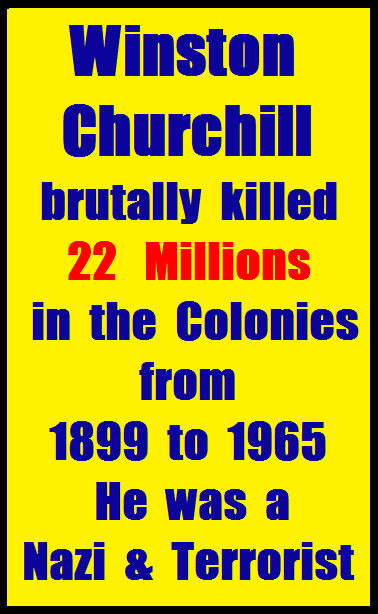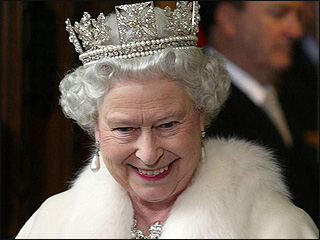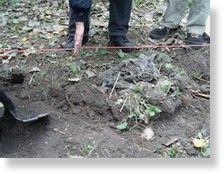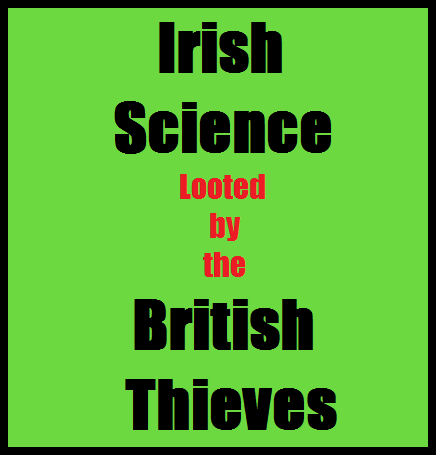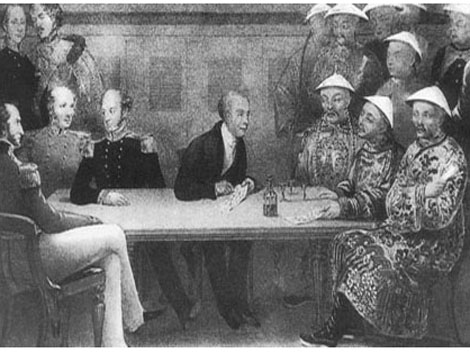.
.
.
Churchill Famine
.
Churchill Famine
.
Churchill Famine
.
Churchill Famine
.
Churchill Famine
.
.
.
.
.
Churchill Famine
in
India & Bangladesh
in 1942
.
.
.
.

.
.
.
.
We demand
Compensation for India
for the
Churchill Famine
of
Nazi Britain
in 1942 in which,
6 — 7 Million Indians
6 — 7 Million Indians
6 — 7 Million Indians
6 — 7 Million Indians
died of
Churchill Famine
&
&
&
&
&
&
We Demand
Compensation for Bangladesh
for the
Churchill Famine
of
Nazi Britain
in 1942 in which,
6 — 7 Million Bangla People
6 — 7 Million Bangla People
6 — 7 Million Bangla People
6 — 7 Million Bangla People
died of
Churchill Famine
.
.
.
.
.

.
Churchill’s Secret Wars
The British Empire & the Ravaging of India
during World War – II
.
.
By, Respectable & Honourable
Madam Madhusree Mukerjee of India
Hardback
368 Pages
Basic Book Publishers
26 Aug, 2010
ISBN : 046 – 500 – 2013
.
.
www.Madhusree.com
.
.
.
.
Respectable & Honourable Madam
Madhusree Mukerjee of India
.
www.Madhusree.com
.
.
Respectable & Honourable Madam, Miss Madhusree Mukerjee is an Indian writer, science journalist and a former physicist
Her new book, Churchill’s Secret War: The British Empire and the Ravaging of India during World War II uses meticulous research and new sources to relate how Winston Nazi Churchill and his Terrorist War Cabinet exhaustively used Indian resources to fight the Second World War, provoking famine and insurrection in the Eastern province of Bengal. The book is also a riveting account of the triumphant but tragic final stage of India’s freedom movement
.
.
.
.
.
Churchill-cide
.
Churchill-cide
.
Churchill-cide
.
Churchill-cide
.
Churchill-cide
.
= =
= =
= =
= =
.
Churchill’s Genocide
.
Churchill’s Genocide
.
Churchill’s Genocide
.
Churchill’s Genocide
.
Churchill’s Genocide
.
.
.
.
Churchill Nazi, Winston Churchill is to Blame for Churchill famine in Bangal (Contemporary Bangladesh) in India in 1942, which resulted in the death of around 6 – 7 Million Indians. All these unfortunate Indians & Bangladeshis fell victims to the Churchill Famine of the Churchill Nazi, for which, Winston Churchill was NEVER prosecuted all his life
.
.
.
Churchill Nazi, Winston Churchill notoriously remarked that, “Since the Indians breed like Rabits, let some of them die. They would only reproduce their fellow Dead, within just a few months”
.
.
.
These heartless & Genocidal minded remarks can only emanate from the mouth of a Committed, Confirmed & a Brutal Nazi, Fascist, Terrorist & War Criminal, which Winston Churchill, undoubtedly was
.
.
.
.
.
Winston Churchill
was
the Biggest
Nazi, Fascist, Terrorist
&
War Criminal
of the 20th Century,
because he
happily, willingly & brutally
happily, willingly & brutally
happily, willingly & brutally
happily, willingly & brutally
happily, willingly & brutally
massacred
&
killed
22 Millions
22 Millions
22 Millions
22 Millions
22 Millions
22 Millions
22 Millions
22 Millions
in the British Colonies
between
1899 & 1965
.
.
..
.
.
.
.
Book Review
.
Churchill’s Secret Wars
.
Churchill Famine in India & Bangladesh
.
.
.
.
.
Times of India
20 Comments
.
.
NEW DELHI :
British prime minister Winston Churchill deliberately let millions of Indians starve to death, the author of a new book has claimed, alleging he was motivated in part by racial hatred. As many as three million people died in the Bengal famine of 1943 after Japan captured neighbouring Burma — a major source of rice imports — and British colonial rulers in India stockpiled food for soldiers and war workers.
.
Panic-buying of rice sent prices soaring, and distribution channels were wrecked when officials confiscated or destroyed boats and bullock carts in Bengal to stop them falling into enemy hands if Japan invaded. Rice became scarce and, as worsening hunger spread through villages, Churchill repeatedly refused pleas for emergency food shipments.
.
Emaciated masses drifted into Kolkata, where eye-witnesses described men fighting over foul scraps and skeletal mothers dying in the streets as British and middle-class Indians ate large meals. The “man-made” famine has long been one of the darkest chapters of the British Raj, but now Madhusree Mukerjee says she has uncovered evidence that :
.
Churchill was directly responsible for the appalling sufferings
Churchill was directly responsible for the appalling sufferings
Churchill was directly responsible for the appalling sufferings
.
Her book, “Churchill’s Secret War”, quotes previously unused papers that disprove his claim that no ships could be spared from the war and that show him brushing aside increasingly desperate requests from British officials in India.
.
Analysis of World War II cabinet meetings, forgotten ministry records and personal archives show that full grain ships from Australia were passing India on their way to the Mediterranean region, where huge stockpiles were building up. “It wasn’t a question of Churchill being inept: sending relief to Bengal was raised repeatedly and he and his close associates thwarted every effort,” Mukerjee said.
.
.
.
___________________
.
.
.
.
.
Churchill Famine
.
Churchill Famine
.
Churchill Famine
.
Churchill Famine
.
Churchill Famine
.
.
.
.
.
Churchill Famine
in
India & Bangladesh
in 1942,
in which
Winston Churchill
killed
6 – 7 Million
Indians & Bangladeshis
with a
total
total total
total total total
total total total total
total total total total total
total total total total total total
impunity
We hate Winston Nazi Churchill
.
.
.
.
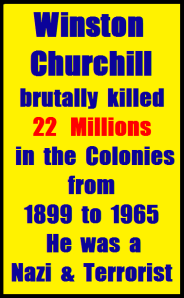
.
.
.
.
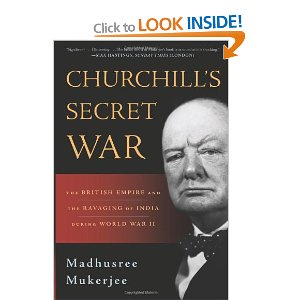
.
Churchill Nazi, Winston Churchill
Churchill Nazi, Winston Churchill
.
.
.
Churchill Famine
.
Churchill Famine
.
Churchill Famine
.
.
.
Churchill Nazi, Winston Churchill Looted India & Killed 6 – 7 Million Indians during the artificial British Famine, which lasted for around 3 years i.e. 1942 – 1945
Winston Churchill & his Nazi Britain imposed thousands of such British Famines upon the whole world, during their Nazi & Terrorist British Colonial Era
.
.
.
.
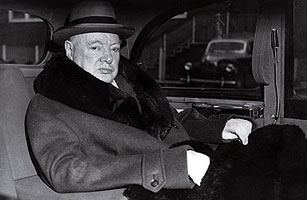
.
Wanted
Dead or Alive
.
.
Have you seen this Churchill Nazi somewhere ?
If yes,
then report him to the Police
in
India & Bangladesh
immediately, immediately, immediately,
because he is
Wanted – Dead or Alive
Wanted – Dead or Alive
Wanted – Dead or Alive
Wanted – Dead or Alive
for his
Churchill Famine
Churchill Famine
Churchill Famine
Churchill Famine
in both these countries
.
.
.
.
.
.
Book Review
.
Churchill’s Secret Wars
.
Churchill Famine in India & Bangladesh, 1942
.
.
.
.
.
The Ugly Briton
By, Shashi Tharoor, Indian MP
Monday — 29-11-2010
.
.
.
.
.
.
” I hate Indians “
” I hate Indians “
” I hate Indians “
” They are Beastly People
with a
Beastly Religion “
.
.
Churchill Nazi said to
Leopold Amery,
Minister for India
.
.
.
Few statesmen of the 20th century have reputations as outsize as Winston Churchill’s. And yet his assiduously self-promoted image as what the author Harold Evans called “the British Lionheart on the ramparts of civilization” rests primarily on his World War II rhetoric, rather than his actions as the head of a government that ruled the biggest empire the world has ever known. Madhusree Mukerjee’s new book, Churchill’s Secret War, reveals a side of Churchill largely ignored in the West and considerably tarnishes his heroic sheen.
.
In 1943, some 3 million brown-skinned subjects of the Raj died in the Bengal famine, one of history’s worst. Mukerjee delves into official documents and oral accounts of survivors to paint a horrifying portrait of how Churchill, as part of the Western war effort, ordered the diversion of food from starving Indians to already well-supplied British soldiers and stockpiles in Britain and elsewhere in Europe, including Greece and Yugoslavia. And he did so with a churlishness that cannot be excused on grounds of policy: Churchill’s only response to a telegram from the government in Delhi about people perishing in the famine was to ask why Gandhi hadn’t died yet. (See the top 10 weird government secrets.)
.
British imperialism had long justified itself with the pretense that it was conducted for the benefit of the governed. Churchill’s conduct in the summer and fall of 1943 gave the lie to this myth. “I hate Indians,” he told the Secretary of State for India, Leopold Amery. “They are a beastly people with a beastly religion.” The famine was their own fault, he declared at a war-cabinet meeting, for “breeding like rabbits.”
.
As Mukerjee’s accounts demonstrate, some of India’s grain was also exported to Ceylon (now Sri Lanka) to meet needs there, even though the island wasn’t experiencing the same hardship; Australian wheat sailed past Indian cities (where the bodies of those who had died of starvation littered the streets) to depots in the Mediterranean and the Balkans; and offers of American and Canadian food aid were turned down. India was not permitted to use its own sterling reserves, or indeed its own ships, to import food. And because the British government paid inflated prices in the open market to ensure supplies, grain became unaffordable for ordinary Indians. Lord Wavell, appointed Viceroy of India that fateful year, considered the Churchill government’s attitude to India “negligent, hostile and contemptuous.” (See pictures of the Red Cross during the war.)
.
Mukerjee’s prose is all the more devastating because she refuses to voice the outrage most readers will feel on reading her exhaustively researched, footnoted facts. The way in which Britain’s wartime financial arrangements and requisitioning of Indian supplies laid the ground for famine; the exchanges between the essentially decent Amery and the bumptious Churchill; the racism of Churchill’s odious aide, paymaster general Lord Cherwell, who denied India famine relief and recommended most of the logistical decisions that were to cost so many lives — all are described in a compelling narrative.
.
Churchill said that history would judge him kindly because he intended to write it himself. The self-serving but elegant volumes he authored on the war led the Nobel Committee, unable in all conscience to bestow him an award for peace, to give him, astonishingly, the Nobel Prize for Literature — an unwitting tribute to the fictional qualities inherent in Churchill’s self-justifying embellishments. Mukerjee’s book depicts a truth more awful than any fiction.
.
Mr. Tharoor is an Intellectual & Academic and he intensley hates Churchill Nazi (Winston Churchill), the same way as we (All Irish, French, Swiss & Argentinian Moderators of this Blog, Politics-5) do. Mr. Tharoor was the Deputy Secretary General of United Nations in the past and now, he is a Member of Parliament in India.
He is the author of —– Nehru : The Invention of India – and other books
.
.
.
.
.
.
____________________
.
.
.
.
.
.
.
Book Review
.
Churchill’s Secret Wars
.
Churchill Famine in India & Bangladesh, 1942
.
.
.
http://www.independent.co.uk/arts-entertainment/books/reviews/churchills-secret-war-by-madhusree-mukerjee-2068698.html
.
.
.
By, Prof. Chandak Goopta
History Professor,
Birkbek College
Sep 3, 2010
.
C.Sengoopta@BBK.co.uk
.
.
.
http://www.bbk.ac.uk/history/our-staff/full-time-academic-staff/professor-chandak-sengoopta/professor-chandak-sengoopta
.
.
Ihave not become the King’s First Minister in order to preside over the liquidation of the British Empire,” Winston Churchill famously declared in 1942. That passion for empire did not, however, entail the duty of protecting the lives of the King’s distant subjects, especially Indians, “a beastly people with a beastly religion.” In 1943, as millions were dying of starvation in 1943 in Bengal, the birthplace of the Raj, Churchill not only refused to help but prevented others from doing so, commenting that Indians “bred like rabbits.” The Churchill industry, more interested in Winston Churchill’s dentures than in his Thousands of War Crimes, has managed to keep this appalling story fairly quiet.
.
Much has been written on the Bengal famine in India and America, but mostly concentrating on local factors. Madhusree Mukerjee’s Churchill’s Secret War, however, sets the disaster in its imperial context, showing how the story of the famine was interwoven with the history of Gandhi’s “Quit India” movement and the attitudes and priorities of Churchill and his war cabinet. It establishes how Churchill and his associates could easily have stopped the famine with a few shipments of foodgrains but refused, in spite of repeated appeals from two successive Viceroys, Churchill’s own Secretary of State for India and even the President of the United States.
.
Famines, never unknown in India, became increasingly lethal during the Raj because of the export of foodgrains and the replacement of food crops with indigo or jute. The Second World War made things worse, especially after Japanese forces occupied Burma in 1942, cutting off Indian rice imports. Then a destructive cyclone hit the Bengal coast just when the crucial winter crop was maturing and the surviving rice was damaged by disease. Officials of the Raj, fearing a Japanese invasion, confiscated everything that might help the invading force – boats, carts, motor vehicles, elephants and, crucially, all the rice available. The Japanese never came but a panicking public – and many crafty businessmen – immediately began to hoard rice and the staple food of the people quickly disappeared from the marketplace.
.
Government stocks were released but only to feed the people of Calcutta, especially British businesspeople and their employees, railway and port workers and government staff. Controlled shops were opened for less important Calcuttans and the urban population never suffered too greatly. The rural masses, however, were left to the wolves. This was when Churchill could have made a difference by sending wheat or rice to Bengal, and not enormous quantities. The point was to make hoarding unprofitable and as the Viceroy Lord Linlithgow pointed out, “the mere knowledge of impending imports” would have done so by lowering the price of rice.
.
Churchill and his war cabinet, however, decided to reserve available shipping to take food to Italy in case it fell to the Allies. Indian nationalist Subhas Chandra Bose, then fighting with Axis forces, offered to send rice from Burma but British censors did not even allow his offer to be reported. Australia and Canada were eager to send wheat but virtually all merchant ships plying in the Indian Ocean area had been moved to the Atlantic in order to bring food to Britain, which already had a comfortable stockpile.
.
So hundreds of thousands perished in the villages of Bengal and, by the middle of 1943, hordes of starving people were flooding into Calcutta, most dying on the streets, often in front of well-stocked shops or restaurants serving lavish meals. The very air of the metropolis, a journalist noted, was pervaded by that “distinctive sourish odour which the victims give off a few hours before the end.”
.
In London, Churchill’s beloved advisor, the physicist Frederick Alexander Lindemann (Lord Cherwell), was unmoved. A firm believer in Malthusian population theory, he blamed Indian philoprogenitiveness for the famine – sending more food would worsen the situation by encouraging Indians to breed more. The prime minister was of the same opinion and expressed himself so colourfully that Leo Amery, Secretary of State for India, exploded at him, comparing his attitudes to Hitler’s.
.
The Churchill industry has always denied that their idol could have done anything to relieve the Bengal famine. Shipping, they claim, was scarce and it just wasn’t possible to send food to Bengal. Mukerjee nails those “terminological inexactitudes” with precision. There was a shipping glut in summer and autumn 1943, thanks to the US transferring cargo ships to British control. Churchill, Lindemann and their close associates simply did not consider Indian lives worth saving.
.
Mukerjee has researched this forgotten holocaust with great care and forensic rigour. Mining an extensive range of sources, she not only sheds light on the imperial shenanigans around the famine, but on a host of related issues, such as the flowering of nationalism in famine-hit districts, Churchill’s fury about the sterling credit that India was piling up in London, or the dreadful situation in the villages even after the famine was technically over. Her calmly phrased but searing account of imperial brutality will shame admirers of the Greatest Briton and horrify just about everybody else.
.
.
.
.
Further Reading about
Churchill Famine :
.
.
http://www.amazon.co.uk/Churchills-Secret-War-British-Forgotten/dp/0465002013
.
http://www.independent.co.uk/arts-entertainment/books/reviews/churchills-secret-war-by-madhusree-mukerjee-2068698.html —– Reviewed by an Indian Historian, Chandak Sengoopta, Professor of History, Birkbeck College, Nazi London, Nazi Britain
.
http://reflectionsvvk.blogspot.de/2012/09/book-review-churchills-secret-war.html
.
http://smallwarsjournal.com/blog/book-review-churchills-secret-war
.
https://www.kirkusreviews.com/book-reviews/madhusree-mukerjee/churchills-secret-war/
.
http://bloggingheads.tv/videos/2734 — VIDEO
.
http://www.flipkart.com/churchill-s-secret-war-9380658476/p/itmdf8avpueqkcmx
.
.
.
.

.
.
.

.
.
.

.
.
.
.
.
.
.
.
